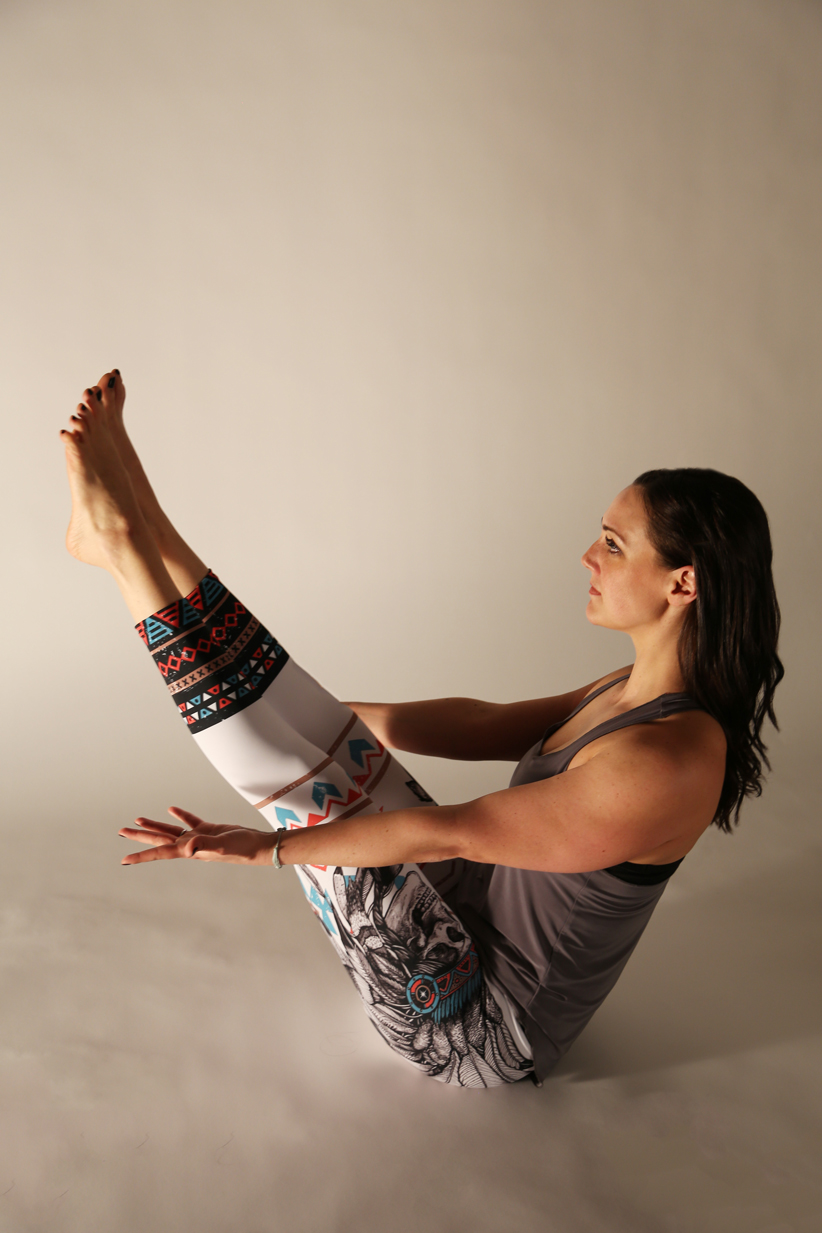
Although it’s not a crowd pleaser, navasana truly should get the unsung hero award for all it does to strengthen the body.
Navasana, boat pose, is never a fan favorite, which is why when I teach I try to disguise that the grand-daddy of core strengtheners is on deck. Yet, although it’s not a crowd pleaser, it truly should get the unsung hero award for all it does to strengthen the body. Not many other poses strengthen the erector spinae muscles, the deep abdominals and the hip flexors in quite the same way, never mind all at the same time.
My regular students are on to my trickery… When we are innocently sitting in dandasana and I ask them to bend the legs, lean back and settle themselves upon their “sit” bones and tailbone they know it is time. The dread is audible. Often we try to pre-set the alignment by pressing the feet into a strap that is wrapped around the balls of the feet. Gently tugging against the strap with the hands creates tension so that it is easier to lengthen the spine and the keep the chest lifted, which for most people is the hardest part of the pose though it is over-looked by the desire to straighten the legs at any cost.
Ideally, navasana takes the shape of dandasana and tips it on a 45 degree angle. Sounds easy enough until your back rounds, your chest collapses, your legs shake uncontrollably and/or your feet plummet to the floor. In some way or another, this pose is going to get you — but in the process, it could be one of your best teachers, which is why we must practice it intelligently to reap the benefits rather than fake it out and continue to place it in the “hateful pose” category.
Begin to notice when you practice the pose if it’s harder for you to keep your chest lifted and spine long, or if it’s harder for you to lift the legs.
So what can we learn while practicing navasana? Begin to notice when you practice the pose if it’s harder for you to keep your chest lifted and spine long, or if it’s harder for you to lift the legs. If it’s the former, you need to strengthen your erector spinae, which you can do with bhujangasana, low cobra, or salabasana, locust pose. If your legs do not want to stay lifted or you feel that intense burning at the top of the thigh every time you practice it, it is your hip flexors that need to strengthen. Practicing either supine leg lifts and lowers or the final stage of standing hand to big toe pose, when the leg is lifted without hooking the big toe, will make your hip flexors stronger. Straightening the legs in the pose in part has to do with the openness of the hamstrings, but more often has to do with the hip flexors ability to support a longer lever than with the legs bent.
Aiding both the spinal muscles and hip flexors are the transverse abdominal muscles, which need to fire to keep the thigh bones and torso at a 90 degree angle. These muscles are the deepest layer of abdominals and run from the sternum to the pelvis. They are considered critical in back and core health. Sadly, you will not get the six-pack abs you may want through navasana but strengthening the transverse is like permanently wearing a corset.
Personally, I struggled with the hip flexor part of this navasana equation. I had heard tales of squeezing a block between my legs or crossing my ankles to make it subside but it was only committing to practice the pose every single day for a month that finally ended that pain. The day I could hang out in boat without the slightest reminder of my weak hip flexors was confirmation that Pattabhi Jois was right ,yet again, when he said, “Slowly, slowly…Practice and all is coming.”
Most important, as we struggle along the way, navasana gives us the opportunity to notice our personality.
If you can find the discipline to practice this pose every day, you may be able to stand up taller because your strengthened back muscles are better able to support the spine. You may be able to zip up a tight pair of jeans more easily with your toned transverse abs. You may even lift into handstand more effortlessly with the newfound power of your hip flexors. But most important, as we struggle along the way, navasana gives us the opportunity to notice our personality. For how we approached and reacted to the pose is usually indicative of how we deal with struggles that actually matter.
Kristin Olson, E-RYT 500, MS is studio owner at Andover Home Yoga.
Photographer Hannah Latham is an emerging portrait and alternative process focused photographer from the Boston area. She is constantly building off of her life experiences and experimenting with new styles and techniques.
In the pose, the author is wearing leggings by Altar Ego Performance Wear and top by Onzie .
Kristin Olson (E-RYT 500, MS) is the studio owner at Home Yoga in Andover, Massachusetts – both their Chestnut Street and North Main Street locations. Her classes and teacher training programs combine Ashtanga’s emphasis on connecting breath with movement and Iyengar’s emphasis on proper alignment. It has been her experience that these seemingly disparate yoga traditions offer students the ability to quiet the mind while also strengthening and opening the body. Kristin’s teaching has been strongly influenced by internationally esteemed yoga teacher Natasha Rizopoulos, with whom she earned both her 200-hour and 500-hour Yoga Alliance-compliant teacher certificate. In addition to her teaching, she assists Natasha with YogaWorks teacher trainings and at Kripalu Yoga Center. She also studies regularly with revered master Iyengar yoga teacher Patricia Walden.
